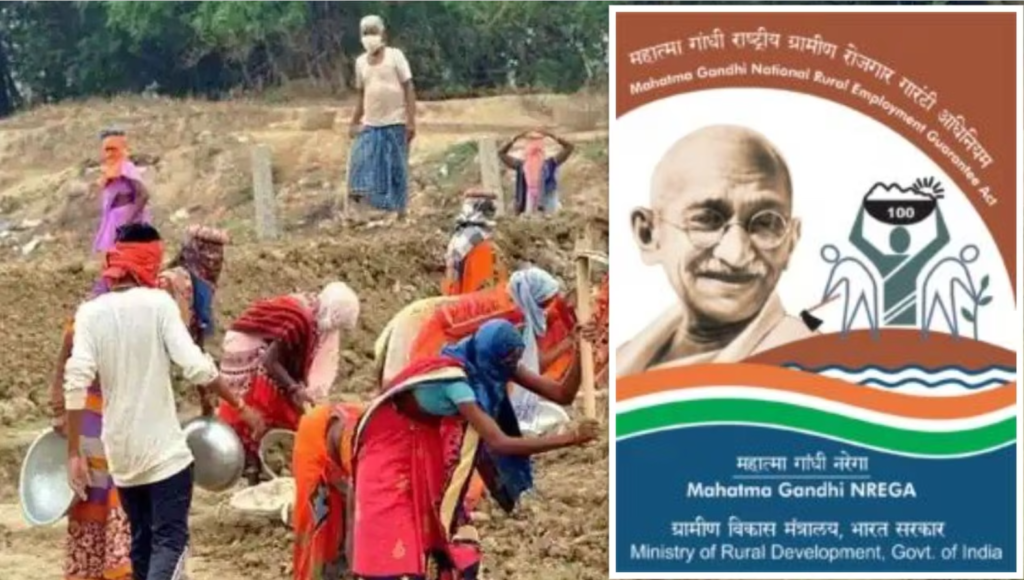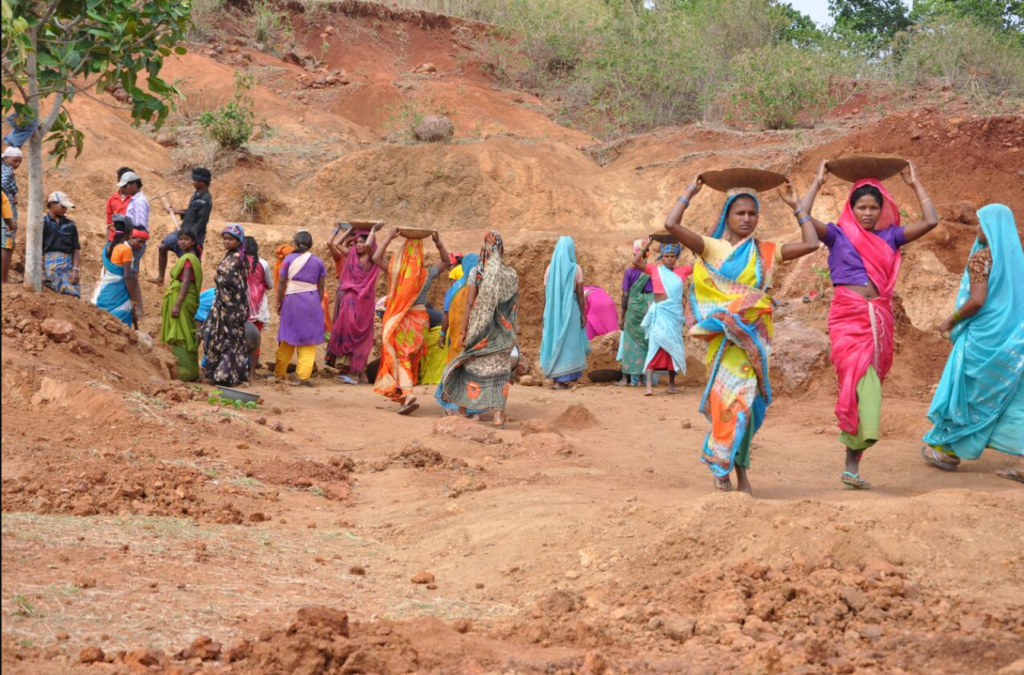Explore the key aspects of the Mahatma Gandhi National Rural Employment Guarantee Act (MGNREGA) and its impact on rural employment. Learn more.
In the vast landscape of India, where the majority of the population resides in rural areas, addressing issues of poverty, unemployment, and economic disparity becomes paramount. The Mahatma Gandhi National Rural Employment Guarantee Act, enacted in 2005, stands as a beacon of hope for millions of rural Indians. This groundbreaking legislation not only guarantees employment but also aims to empower rural citizens, enhance their livelihoods, and contribute to the inclusive growth of the nation. In this comprehensive article, we will delve deep into the origins, objectives, implementation, impact, challenges, and future prospects of MGNREGA.

Genesis of MGNREGA
Understanding the significance of MGNREGA necessitates tracing its historical roots. In the early 2000s, India grappled with pressing issues related to rural poverty, unemployment, and the migration of rural labor to urban centers in search of work. It was in this backdrop that the government recognized the dire need for a comprehensive program that could address these challenges while ensuring social and economic justice in rural areas.
The act was aptly named after Mahatma Gandhi, the father of the nation, who had championed the cause of rural empowerment. The idea was to provide a legal guarantee of 100 days of wage employment to every household in rural India, thereby enhancing their livelihood security and well-being.

Objectives of MGNREGA
The primary objectives of MGNREGA are multi-faceted and far-reaching:
- Employment Generation: At its core, the program is designed to create wage employment opportunities in rural areas. This not only reduces unemployment but also leads to increased income and improved living standards for rural households.
- Asset Creation: MGNREGA goes beyond providing temporary employment. It emphasizes the creation of durable community assets like roads, water conservation structures, irrigation facilities, and more. These assets not only benefit the community but also enhance agricultural productivity.
- Gender Equality: The act places a strong emphasis on gender equality by ensuring that at least one-third of the beneficiaries are women. This not only empowers women economically but also contributes to their social empowerment.
- Social Inclusion: MGNREGA is designed to be inclusive, targeting marginalized communities, scheduled castes, and tribes. It seeks to bridge the gap between the privileged and the marginalized in rural India.

Implementation and Operation
The success of MGNREGA lies in its decentralized implementation. At the grassroots level, Gram Panchayats play a pivotal role in planning and executing projects under this scheme. The act mandates that employment must be provided within 15 days of a job application, failing which the worker is entitled to compensation.
The funds allocated for MGNREGA are shared by the central and state governments. The central government bears 100% of the wage costs and 75% of the material cost, while the remaining 25% of the material cost is borne by the state government. This financial arrangement ensures that the burden is shared, and the program can function efficiently.

Impact of MGNREGA
Over the years, MGNREGA has brought about a remarkable transformation in rural India, leaving a lasting impact:
1. Reduced Migration
One of the most significant achievements of MGNREGA is the reduction in distress-driven migration of rural laborers to urban centers. By providing employment opportunities in their own villages, MGNREGA has stemmed the tide of migration, leading to the strengthening of rural communities.

2. Economic Upliftment
MGNREGA has significantly increased the income and purchasing power of rural households. This, in turn, has reduced poverty and improved their overall standard of living. Rural families now have a safety net, ensuring they can meet their basic needs.
3. Infrastructure Development
Thousands of kilometers of roads, water conservation structures, and other assets have been created under MGNREGA. These community assets have not only enhanced connectivity but have also improved agricultural productivity. The impact of these assets is far-reaching, benefiting the entire region.
4. Women Empowerment
With a focus on women’s participation, MGNREGA has played a pivotal role in empowering women. It has given them economic independence and decision-making roles in their households. Women’s active involvement in the program has contributed to gender equality in rural India.

5. Poverty Alleviation
MGNREGA has been instrumental in alleviating poverty in rural areas. By providing employment and wages directly to the rural poor, it has ensured that they have the means to support themselves and their families, reducing their dependency on welfare schemes.
ALSO READ: The Legacy Of Mahatma Gandhi: Celebrating His 154th Birth Anniversary
Challenges Faced by MGNREGA
While MGNREGA has been a game-changer in rural development, it faces certain challenges:
1. Fund Allocation
Adequate allocation of funds is crucial for the program’s effectiveness. Ensuring that sufficient resources are available to meet the increasing demand for rural employment is a constant challenge.
2. Timely Wage Payments
Ensuring timely payment of wages to workers is essential to maintain their trust and participation in the program. Delays in wage payments can lead to dissatisfaction and deter workers from seeking employment under MGNREGA.
3. Asset Management
Effective management of assets created under MGNREGA is critical for their sustainability and continued benefit to the community. Proper maintenance and utilization of these assets need consistent attention.
4. Awareness and Participation
In some regions, awareness about MGNREGA and its benefits remains low. Encouraging greater participation and ensuring that eligible beneficiaries are aware of their entitlements is an ongoing challenge.

The Way Forward
To secure the future of MGNREGA and build on its successes, several steps can be taken:
1. Enhance Awareness
Raising awareness among rural communities about their rights and entitlements under MGNREGA is essential. Information campaigns and community outreach programs can play a crucial role in this regard.
2. Strengthen Monitoring
Implementing robust monitoring mechanisms to track the progress of projects and ensure transparency is crucial. Real-time monitoring can help identify issues and address them promptly.
3. Skill Development
Integrating skill development programs with MGNREGA can enhance the employability of rural workers. Equipping them with additional skills can open up new opportunities beyond the program.
4. Increase Budget Allocation
Ensuring adequate budget allocation to meet the increasing demand for rural employment is vital. The government must commit to providing the necessary resources to sustain the program’s impact.

Conclusion
The Mahatma Gandhi National Rural Employment Guarantee Act is not merely a government initiative; it is a lifeline for millions of rural Indians. It has not only provided employment but has also paved the way for rural empowerment, gender equality, and sustainable development. As we look ahead, nurturing and strengthening MGNREGA remains pivotal in our quest for a prosperous and inclusive rural India. This landmark legislation stands as a testament to our commitment to Mahatma Gandhi’s vision of rural self-reliance and social justice.
Click here, to visit official site Of MGNREGA.
ALSO READ: Mahatma Gandhi Essay 2023: The Father of the Indian Nation
Image source: Google




































